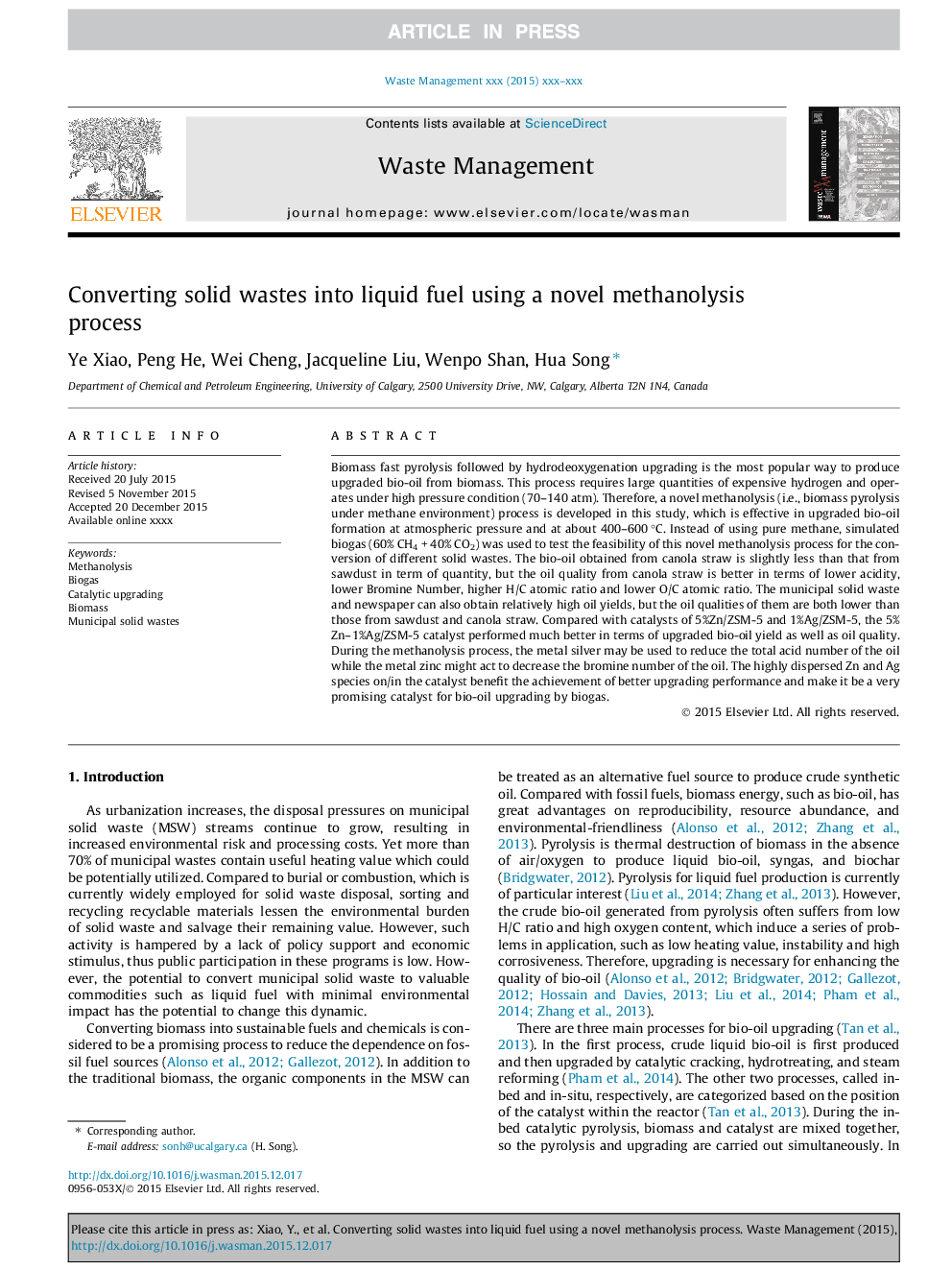| Article ID | Journal | Published Year | Pages | File Type |
|---|---|---|---|---|
| 6353806 | Waste Management | 2016 | 7 Pages |
Abstract
Biomass fast pyrolysis followed by hydrodeoxygenation upgrading is the most popular way to produce upgraded bio-oil from biomass. This process requires large quantities of expensive hydrogen and operates under high pressure condition (70-140 atm). Therefore, a novel methanolysis (i.e., biomass pyrolysis under methane environment) process is developed in this study, which is effective in upgraded bio-oil formation at atmospheric pressure and at about 400-600 °C. Instead of using pure methane, simulated biogas (60% CH4 + 40% CO2) was used to test the feasibility of this novel methanolysis process for the conversion of different solid wastes. The bio-oil obtained from canola straw is slightly less than that from sawdust in term of quantity, but the oil quality from canola straw is better in terms of lower acidity, lower Bromine Number, higher H/C atomic ratio and lower O/C atomic ratio. The municipal solid waste and newspaper can also obtain relatively high oil yields, but the oil qualities of them are both lower than those from sawdust and canola straw. Compared with catalysts of 5%Zn/ZSM-5 and 1%Ag/ZSM-5, the 5%Zn-1%Ag/ZSM-5 catalyst performed much better in terms of upgraded bio-oil yield as well as oil quality. During the methanolysis process, the metal silver may be used to reduce the total acid number of the oil while the metal zinc might act to decrease the bromine number of the oil. The highly dispersed Zn and Ag species on/in the catalyst benefit the achievement of better upgrading performance and make it be a very promising catalyst for bio-oil upgrading by biogas.
Related Topics
Physical Sciences and Engineering
Earth and Planetary Sciences
Geotechnical Engineering and Engineering Geology
Authors
Ye Xiao, Peng He, Wei Cheng, Jacqueline Liu, Wenpo Shan, Hua Song,
